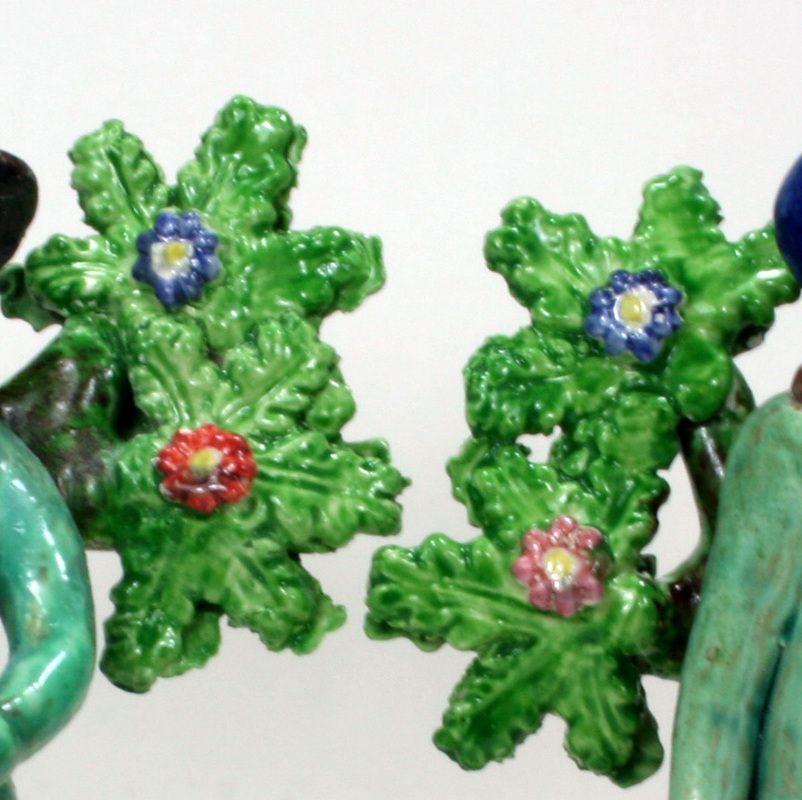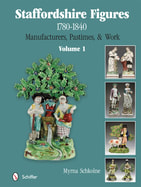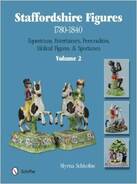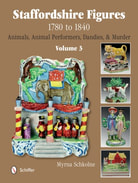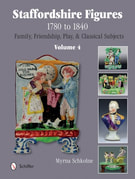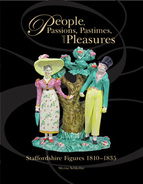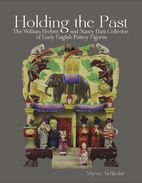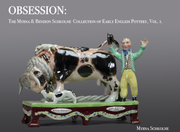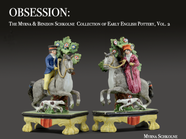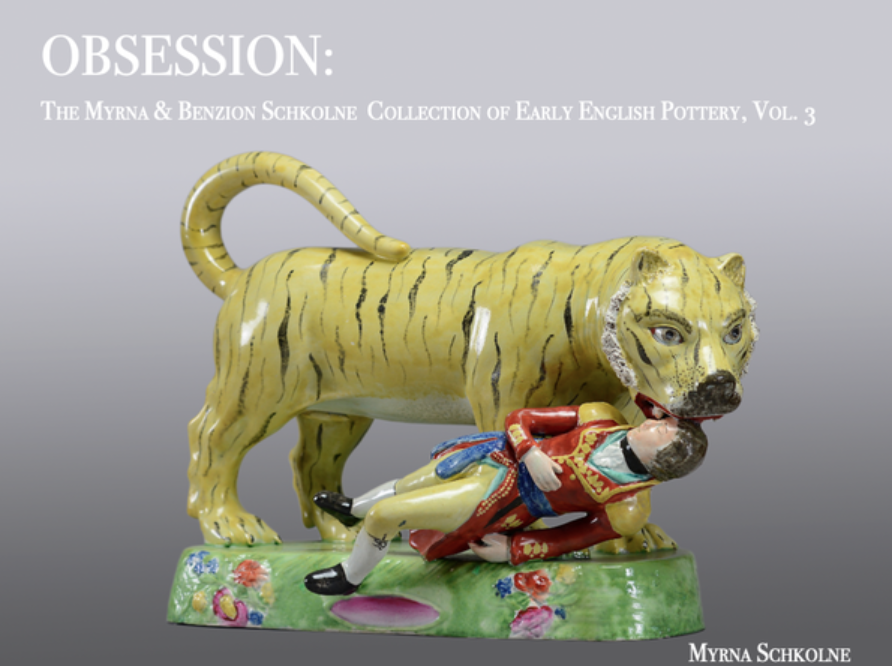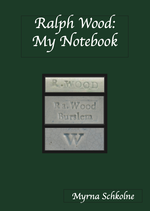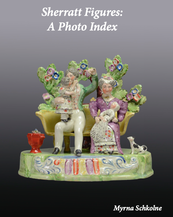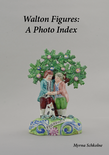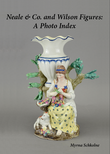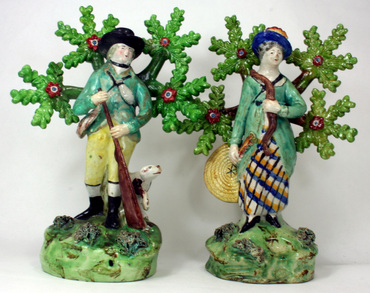
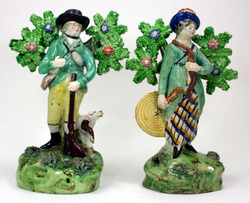
And here the same figures are again, with different bocages. The figures were re-restored with bocages of the right form, but I don't like the result any better. They are too bright, too stiff, too glossy and plasticy, and I find them offensive. Look at the bases and look at the bocages. They are quite alien to each other.
Put on 3x reading glasses and look at a good bocage. You will see a million little details that aren't apparent in a restored bocage, and I hope the pictures above give you an idea of what to look for.
What about bocages with some restoration? Unfortunately, this is almost inevitable, but I do prefer that minor bocage damage be left unrestored. A lost leaf can be less offensive to the eye than a restored leaf. Bocages (and green enamels) are particularly unforgiving of restoration, and you can always detect the restored leaves, as you see below.
If you think about HOW a restorer makes new bocage, you will understand why it is so easy to detect. The restorer will make molds off existing bocage leaves. He then forms a new leaf from this mold. Inevitably, the new leaf is not nearly as well defined as the original. The veins are not as deep, the edges are not as sharp. Then the restorer paints the new leaf. As the paint coats the surface of the new leaf, it further obscures the detailing. And therein lies the difference.
Bocages are 3-D structures, and, as such, it is difficult to do them justice in a photograph. Believe me when I say the artless three-dimensionality is lost in reproduction. New bocages lack a free-flowing ease, and are really rather rigid and stiff.
